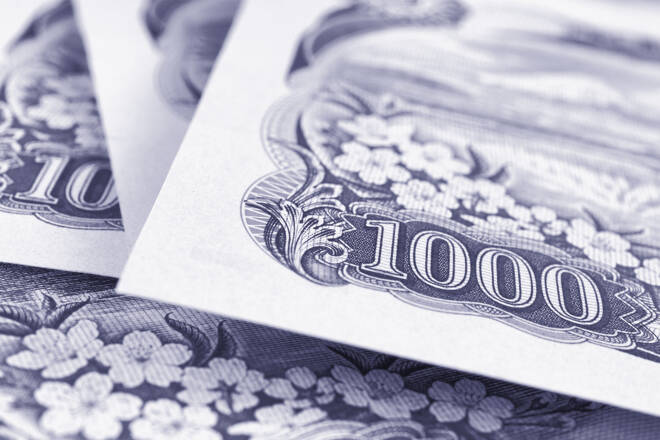Advertisement
Advertisement
USD/JPY Fundamental Daily Forecast – Dollar/Yen Tumbles Amid Shift in Fed Rate Hike Expectations
By:
Rate futures contracts are now pricing in a top policy rate in the 4.75%-5% range next March and interest-rate cuts in the second half of the year.
In this article:
The Dollar/Yen was hammered for a second session on Friday, hitting its lowest level since August 31, as investors continued to shed long positions in anticipation of a slower pace of interest rate hikes by the U.S. Federal Reserve.
Although the Forex pair topped at a 32 year high on October 21 after a massive intervention by the Bank of Japan, the Dollar/Yen showed no sign of changing trend until last Thursday’s U.S. consumer price index (CPI) report came in cooler than expected. The news was bearish enough to drive even the strongest bulls out of the market, producing a historical one-day sell-off.
On Friday, the USD/JPY settled at 138.775, down 2.189 or -1.55%. The Invesco CurrencyShares Japanese Yen Trust ETF (FXY) finished at $67.32, up $1.22 or +1.85%.
Long-Term Uptrend Threatened by Tepid US Inflation Data
The Dollar/Yen’s long-term uptrend began on March 20, 2020 with the start of the global COVID-19 pandemic. Last week’s price action suggests it may be coming to an end after a U.S. consumer price report increased less than expected in October, signaling underlying inflation appears to have peaked, which would allow the Federal Reserve to dial back its hefty interest rate hikes.
This is an important development because the USD/JPY has been soaring since March 2022 when the Federal Reserve started raising its benchmark interest rate. As the Fed hiked rates, the Bank of Japan held steady its ultra-dovish monetary policy.
This divergence in policy helped drive the USD/JPY to a 32-year high as the spread between U.S. Government bonds and Japanese Government bonds widened with each rate hike and making the U.S. Dollar a more attractive asset.
The dollar’s rise and the Yen’s decline made Bank of Japan and Japanese government officials uncomfortable enough to implement two major interventions in September and October in an effort to support the Japanese Yen.
Short-Term Outlook: Increased Volatility
The current sell-off indicates that stubbornly bullish investors are finally liquidating their long-term positions. However, this is just the first leg down in what could be several months of distribution until investors are thoroughly convinced the Fed is done raising rates.
After raising rates more sharply this year than at any time since 1980s, including four straight 75-basis-point rate hikes that brought the policy to a 3.75%-4.0% range as of two-weeks ago, the Fed is now seen shifting to a half-point rate hike next month and a quarter-point after that.
Rate futures contracts are now pricing in a top policy rate in the 4.75%-5% range next March – lower than the 5%-plus range seen before the CPI report – and interest-rate cuts in the second half of the year.
Long-Trend Will Change When Fed Sees Inflation Trending Lower
The current price action and chart pattern suggests this may be the start to a long-term sell-off. However, the USD/JPY is still going to be vulnerable to several snap-back rallies while it makes a major top. This is going to be the source of heightened volatility.
One factor to consider is that the Fed is going to have to be convinced that inflation is beginning to trend lower before ending its rate hike pattern because the Bank of Japan is going to remain dovish.
Last Thursday’s “CPI data were a welcome relief, but there is still a long way to go,” new Dallas Fed President Lorie Logan said. “While I believe it may soon be appropriate to slow the pace of rate increases so we can better assess how financial and economic conditions are evolving, I also believe a slower pace should not be taken to represent easier policy.”
These essentially means USD/JPY should be prepared for volatile, two-sided price action.
For a look at all of today’s economic events, check out our economic calendar.
About the Author
James Hyerczykauthor
James is a Florida-based technical analyst, market researcher, educator and trader with 35+ years of experience. He is an expert in the area of patterns, price and time analysis as it applies to futures, Forex, and stocks.
Did you find this article useful?
Latest news and analysis
Advertisement
